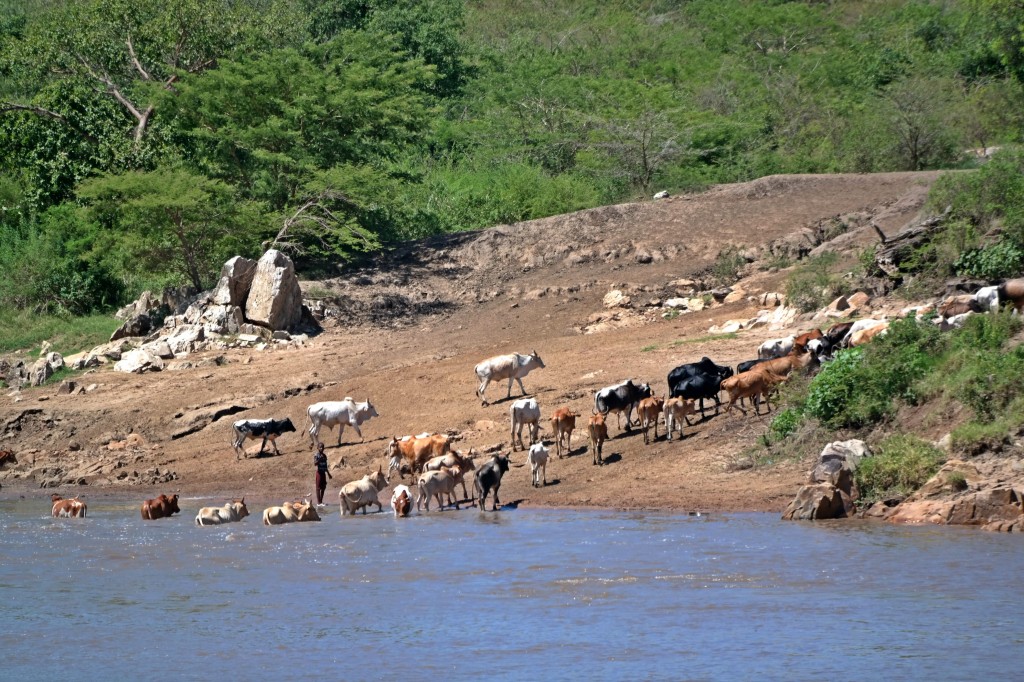The SELVA team traveled throughout the Lower Mara River Basin in Tanzania to collect data from water users about their water access, water quality, and water quantity and encountered chonga moto – Swahili for challenges – related to water and health. Speaking with local people about their water supplies brought up health concerns immediately and this theme of water borne disease continued to feature prominently in interviews throughout the basin. Water borne disease is the most common cause of death in Tanzania. Locals often have no alternative water source to one that is contaminated. Such contamination is due to lack of wastewater treatment, presence of animals and animal waste, contamination or pollutants from upstream sources, mining waste, and mixed use such as bathing and drinking – and some of this is exacerbated by climate change causing warmer temperatures, changes in rainfall patterns and unsustainable development causing further soil erosion and increase of people without infrastructure to handle associated waste.
Health concerns from locals are linked with exposure to water borne disease either their proximity to the water source – such
as in malaria or yellow fever – or their direct contact with contaminated water – such as in cholera. The diseases locals told the SELVA team about included life-threatening and debilitating conditions. There was an ongoing cholera outbreak in many parts of Tanzania during our field trip in March 2016 that was ongoing from October 2015. Locals spoke of kichocho – Swahili word for schistosomiasis – a disease carried by snails present in the Mara River and Lake Victoria and typhoid a disease spread in food and water. SELVA documented other complaints of intestinal worms, amoeba, yeast infections, and skin irritations/rashes. Locals stated that many of the diseases are more prevalent during the rainy season when runoff from the villages enters the river and animal carcasses wash downstream from Serengeti Park. Skin irritation was most often reported as linked with algal blooms or mining waste.
The other associated human health risks with local water sources had to do with the dangers associated with fetching the water; a task that women and children are primarily or solely responsible for (see earlier post on risks and water fetching). Worms and other parasites are thought to lurk in the thick mud along the river’s edge; crocodiles and hippos just offshore. Babies are bathed in the contaminated water within days of their birth, and birthing mothers are bathed in the water just before and after birth (local women stated that sometimes this water is boiled). In fact, in some clinics local women must bring their own water to attend births.
Solutions for health risks such as the ones listed above can come from solutions such as improved water sources infrastructure to target waste water gathering and treatment, drinking water treatment, upstream-downstream coordination and management, and waste and water management. Reduction of contamination can be helped through manure control, designated places for washing and animal watering downstream of village drinking water extraction, maintaining the legal 60 meter buffer zone along the riverside, keeping riparian vegetation intact, and continued monitoring of water quality in order to warn any locals of impending outbreaks.









Recent Comments